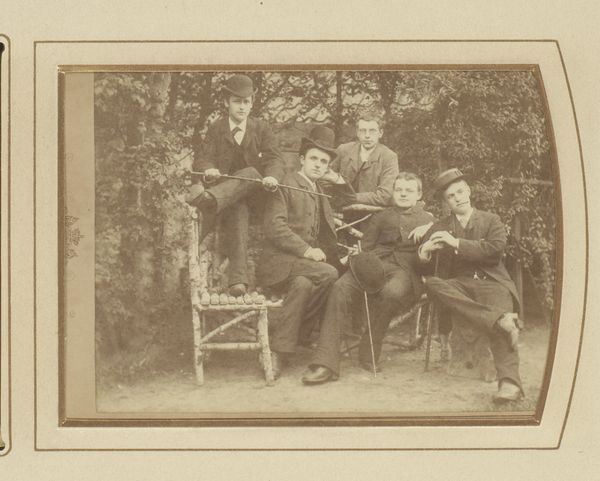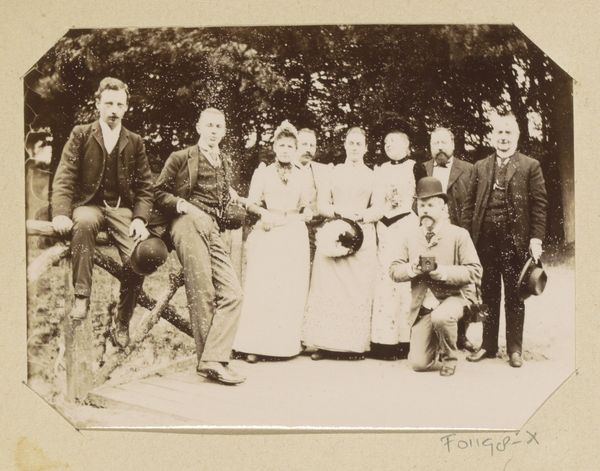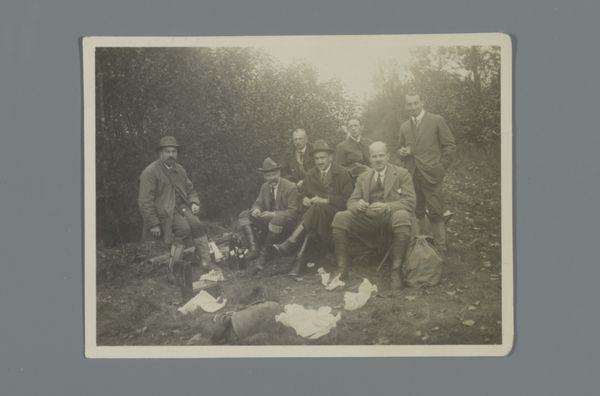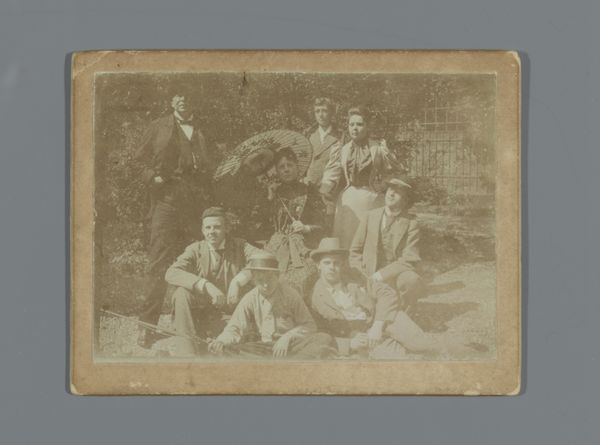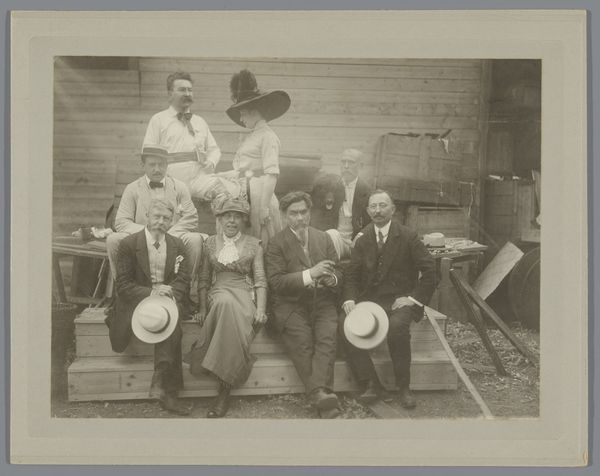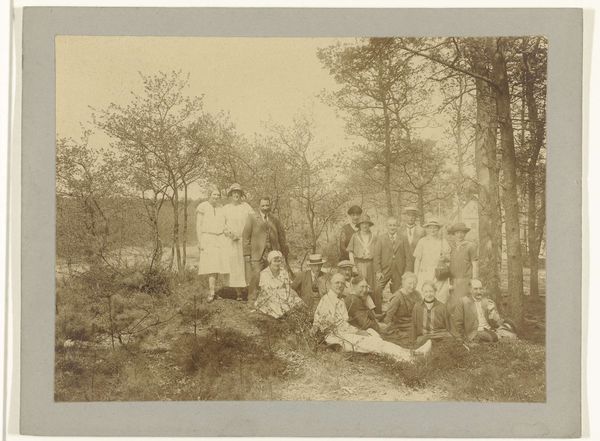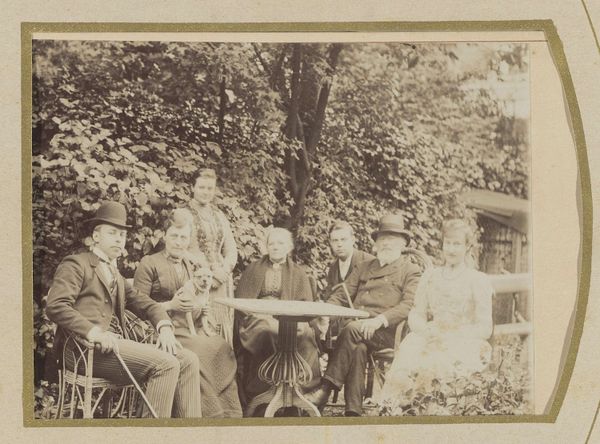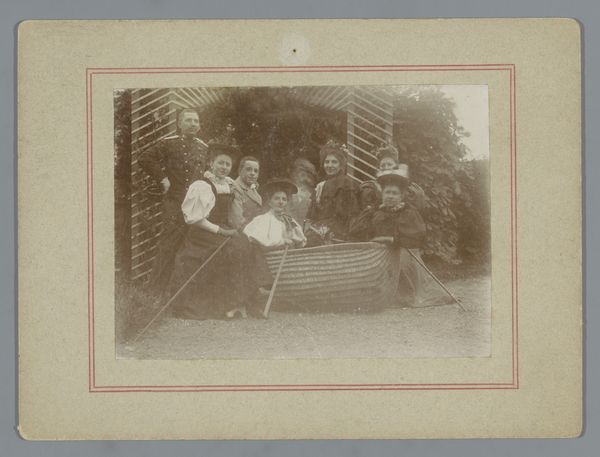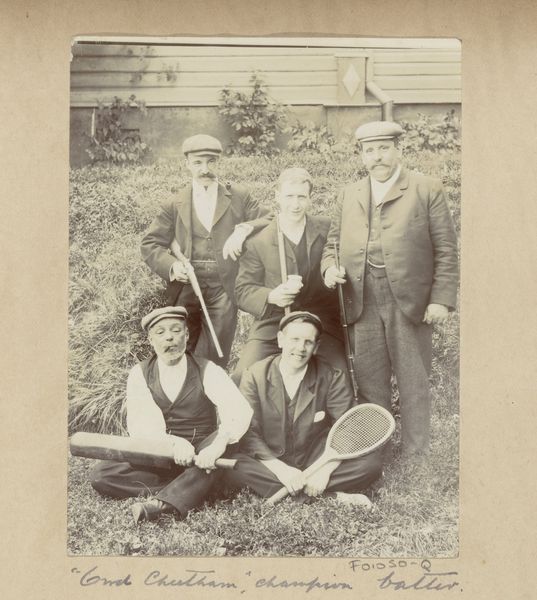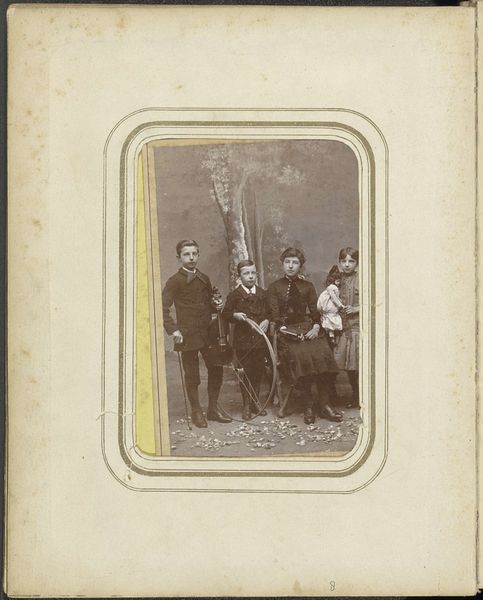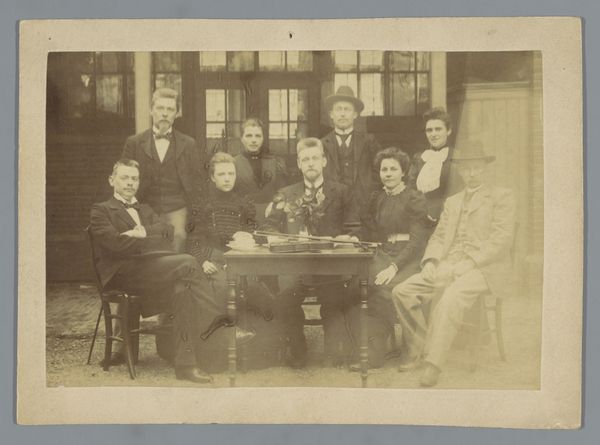
photography, gelatin-silver-print
#
portrait
#
impressionism
#
landscape
#
waterfall
#
photography
#
historical photography
#
gelatin-silver-print
#
19th century
Dimensions: height 167 mm, width 109 mm
Copyright: Rijks Museum: Open Domain
Curator: Immediately, I’m struck by the staged nature of this photograph; the rigid poses of the subjects give an unnatural feeling against the wild backdrop. Editor: This gelatin-silver print, "Groepsportret voor een waterval bij Triberg", which translates to "Group Portrait by a Waterfall at Triberg," comes to us from the late 19th century, sometime between the 1880s and 1890s, from photographer J.K. Berberich. It offers a glimpse into how leisure and portraiture intertwined during this era. Curator: It's intriguing to consider the socio-economic factors that allowed such a group to journey and pose in this way. These were definitely middle-class citizens flaunting their newfound capacity for organized leisure time. But more than just the image itself, consider the dark room where this was developed, and the photographer hunched over chemicals—photography as labor. Editor: Yes, the photograph reflects the social ritual of portraiture in the context of leisure. The backdrop—a waterfall in Triberg—certainly situates it as a fashionable tourist destination of the period. Look at how the positioning of the group in relation to the waterfall—it acts as a dramatic yet tamed backdrop. Consider this photograph as a material artifact too— the tangible representation of a certain kind of bourgeois experience made available for wider consumption. Curator: What strikes me is the lack of spontaneity. There's something so consciously constructed here— the subjects' clothing, the calculated composition—suggesting a society acutely aware of how it wanted to be perceived and marketed. Think of all of these photos from this time period: the way they standardized identity and experience. Editor: I completely agree. I think we can also talk about this piece in the context of institutional settings. These kinds of images also gained momentum as collections in people’s personal archives, reflecting how individuals catalogued experiences to share with wider audiences. Curator: That is such an interesting point that shifts focus onto how personal and societal roles and archives have always affected consumption. Editor: Exactly. What once might have appeared as a simple memento or social marker contains a wider story about representation, labor, and display practices.
Comments
No comments
Be the first to comment and join the conversation on the ultimate creative platform.

